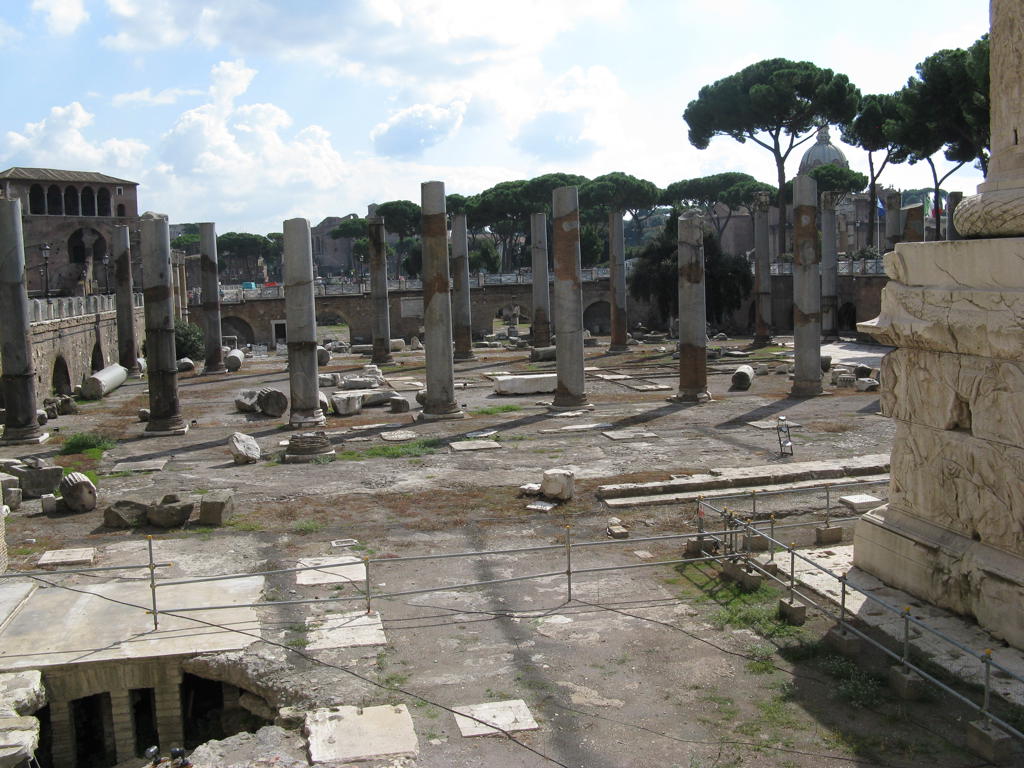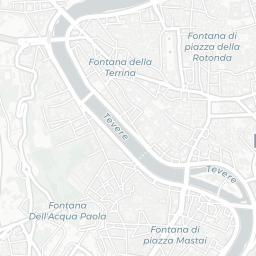About Basilica Ulpia
The grand remains of Basilica Ulpia stretch across the ancient Forum of Trajan, showcasing the architectural prowess of the Roman Empire. Massive columns, once part of a majestic colonnade, line the space, hinting at the basilica's original grandeur. The vastness of the site, with its open central nave and flanking aisles, speaks to its role as a hub of public life in ancient Rome. The intricate carvings on the surviving columns and fragments of the entablature reveal the artistic detail that adorned this civic building, which was the largest of its kind in Rome.
Constructed under Emperor Trajan around 112 AD, the Basilica Ulpia was a centerpiece of the Forum of Trajan, designed by the architect Apollodorus of Damascus. It served as a venue for legal proceedings, commercial activities, and public gatherings, reflecting the multifaceted nature of Roman public architecture. The basilica's name honors Trajan's family, the Ulpii, and its construction marked a high point in Roman engineering and urban planning, symbolizing the power and prosperity of Trajan's reign.
Right Where It Began
The Basilica Ulpia was a revolutionary addition to the Roman Forum, setting a new standard for public buildings. Its construction was part of Trajan's ambitious building program, which included the adjacent Trajan's Column and the Markets of Trajan. The basilica's design, with its vast interior space and sophisticated use of light, influenced the development of Christian basilicas in later centuries. Standing here, one can imagine the bustling activity that once filled this space, from legal debates to commercial transactions, all under the watchful eye of Trajan's administration.
Plan your perfect trip to Rome with Travo! Download now and start exploring.
Marks of Time
The surviving architectural elements of the Basilica Ulpia bear witness to the passage of time and the changing fortunes of Rome. The columns, though weathered, still stand as a testament to the durability of Roman engineering. The floor plan, partially visible through the foundations, reveals the basilica's grand scale and sophisticated layout. These remnants offer a glimpse into the past, allowing visitors to piece together the basilica's original form and function, while also reflecting on the historical events that led to its decline and eventual ruin.
Stories in Stone
The decorative elements of the Basilica Ulpia tell stories of Roman power and artistic achievement. The Corinthian capitals, with their acanthus leaves and volutes, exemplify the elegance of Roman design. Fragments of friezes and reliefs depict scenes of Roman life and mythology, offering insights into the cultural and religious beliefs of the time. These artistic details not only enhanced the basilica's aesthetic appeal but also served to communicate the values and achievements of the Roman Empire to all who entered its halls.
Details That Speak
Close examination of the basilica's remains reveals details that speak volumes about Roman society. The precision of the stonework, the alignment of the columns, and the remnants of the marble flooring all reflect the advanced engineering skills of Roman builders. The basilica's orientation and design were carefully planned to maximize natural light, creating an inviting and functional space for public use. These details highlight the Romans' ability to blend practicality with beauty, creating structures that were both utilitarian and inspiring.
Living History
Today, the Basilica Ulpia stands as a living testament to Rome's imperial past. Its ruins, set against the backdrop of modern Rome, offer a tangible connection to the city's ancient history. Visitors can walk among the columns and imagine the vibrant life that once filled this space, from the voices of orators to the footsteps of merchants. The basilica's enduring presence in the heart of Rome serves as a reminder of the city's resilience and its continuous evolution from antiquity to the present day.

Location
Foro Traiano, 00187, Rome



